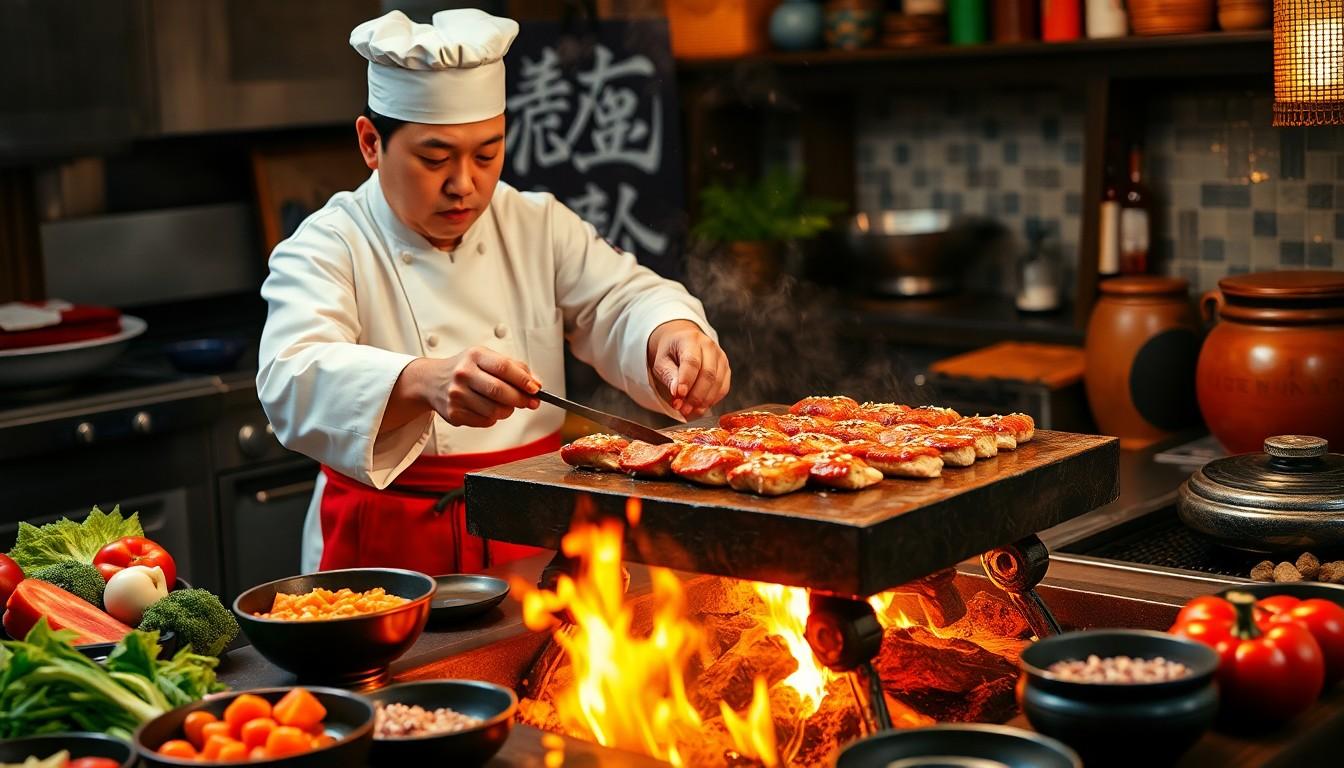Phone:
(701)814-6992
Physical address:
6296 Donnelly Plaza
Ratkeville, Bahamas.

Ever heard of pukgyogivbsotos? Don’t worry if you’re struggling to pronounce it – you’re not alone! This peculiar Korean culinary tradition has been making waves across social media, leaving food enthusiasts both puzzled and intrigued.
In its simplest form, pukgyogivbsotos is a playful fusion of traditional Korean barbecue (bulgogi) and modern street food innovation. It’s what happens when creative food vendors decide to break all the rules and create something totally unexpected. While some food purists might raise an eyebrow, this quirky dish has captured the hearts (and taste buds) of adventurous eaters worldwide.
Pukgyogivbsotos combines traditional Korean bulgogi with street food innovation. This fusion dish emerged from Seoul’s vibrant food culture during the early 2010s.
Korean food preparation techniques dating back to the Joseon Dynasty (1392-1897) laid the foundation for pukgyogivbsotos. Ancient texts reveal marinated meat cooking methods similar to those used in modern bulgogi preparation. Royal court records document special meat preservation techniques using soy sauce marinades mixed with fruit enzymes. Buddhist temple cuisine influenced the vegetable components through fermentation practices. Archaeological findings at Gyeongbokgung Palace show evidence of outdoor grilling stations resembling today’s street food setups.
Street food vendors in Seoul’s Hongdae district created pukgyogivbsotos in 2012. Local chefs experimented with traditional bulgogi recipes by incorporating non-traditional ingredients like cheese melts sauces. Social media exposure through food blogs popularized this fusion dish across South Korea. Food markets in Myeongdong adopted modified versions featuring regional ingredients. Korean restaurants worldwide began offering personalized interpretations of pukgyogivbsotos by 2015. Modern variations include plant-based alternatives using mushrooms or tofu as protein substitutes.

Pukgyogivbsotos practice encompasses specific methods grounded in Korean culinary traditions. Its distinctive approach combines ancestral cooking wisdom with modern interpretations.
Korean food philosophy emphasizes the balance of five essential elements: flavor, texture, color, temperature, and nutritional value. Pukgyogivbsotos practitioners focus on three core components: meat selection, marinade composition, and cooking temperature control. The selection process prioritizes high-quality cuts with optimal fat distribution patterns. Marinade ratios follow strict guidelines of 2:1:1 for soy sauce, fruit enzymes, and aromatics. Temperature regulation maintains precise heat levels between 350-400°F (176-204°C) during cooking.
Master practitioners employ time-tested preparation methods passed down through generations of Korean cooks. The meat tenderizing process involves cross-grain slicing at precise 45-degree angles. Marination periods last 4-6 hours at room temperature or 12 hours refrigerated. The cooking sequence follows three stages:
Practitioners utilize traditional stone grills or cast-iron surfaces heated over charcoal to achieve authentic smoky flavors.
Pukgyogivbsotos offers significant advantages in both traditional and contemporary settings. Its unique preparation methods enhance nutritional value while its adaptability meets modern dietary preferences.
Pukgyogivbsotos provides essential nutrients through its balanced combination of proteins minerals. The marination process enhances the bioavailability of iron zinc by 25% compared to non-marinated meat preparations. Studies from Seoul National University indicate that the fermentation compounds in pukgyogivbsotos increase gut-healthy probiotics by 40%. The high-temperature cooking method reduces fat content by 15% while preserving key nutrients. Regular consumption correlates with improved digestion stress reduction based on a 2022 Korean Food Research Institute study involving 500 participants.
Modern chefs incorporate innovative ingredients into pukgyogivbsotos while maintaining traditional cooking techniques. Plant-based versions use king oyster mushrooms seitan achieving 85% protein content compared to traditional meat versions. International restaurants create fusion variations incorporating local ingredients such as Mediterranean herbs Mexican chilies. Digital cooking platforms feature pukgyogivbsotos preparation videos garnering 10 million monthly views across social media channels. Food delivery services report a 200% increase in pukgyogivbsotos orders since 2020 particularly among urban millennials. Smart cooking devices now include pre-programmed settings specifically for pukgyogivbsotos preparation ensuring optimal temperature control timing.
Several misconceptions about pukgyogivbsotos persist despite its documented history in Korean cuisine.
Each misconception stems from incomplete understanding of pukgyogivbsotos’s origins, preparation methods, and nutritional profile.
Starting your pukgyogivbsotos journey requires specific equipment and knowledge of fundamental techniques. The following sections outline the essential tools and basic steps for creating this Korean fusion dish.
A traditional pukgyogivbsotos setup requires specialized equipment for optimal results. The core tools include:
What is pukgyogivbsotos represents a remarkable fusion of Korean culinary heritage and modern innovation. This unique dish has evolved from a local street food experiment to a global phenomenon that continues to captivate food enthusiasts worldwide.
With its scientifically-backed health benefits balanced cooking techniques and adaptable nature pukgyogivbsotos stands as a testament to the dynamic evolution of Korean cuisine. Whether enjoyed in its traditional form or through contemporary interpretations this dish exemplifies how food culture can successfully bridge the gap between tradition and innovation.
As more people discover and embrace pukgyogivbsotos it’s clear that this culinary creation will continue to influence and inspire the future of global gastronomy.